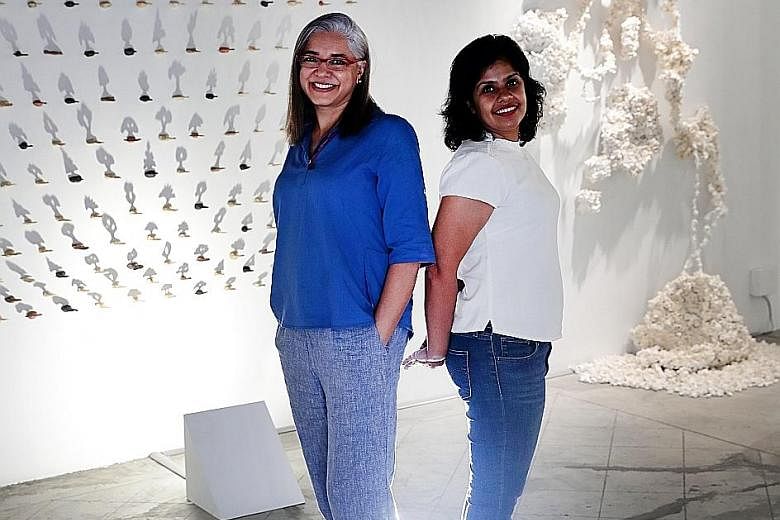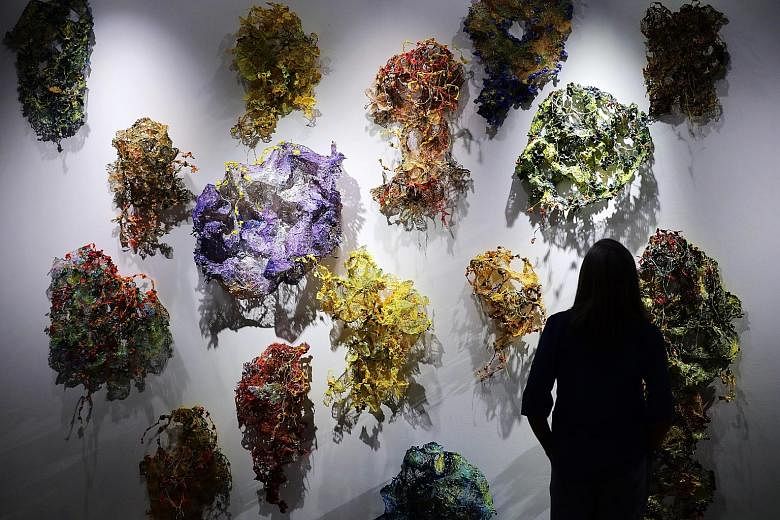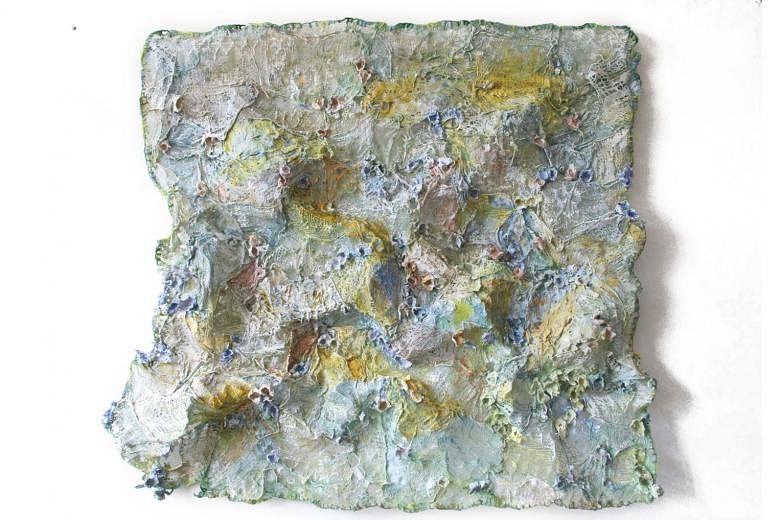Step into The Private Museum in Waterloo Street and you will be greeted by the curious sight of brown "vessels" suspended from the ceiling or resting on the floor.
They seem organic, almost nest-like, but get closer and their devious architecture - hollow structures fashioned from thousands of coniferous seeds held together by wire - have a clearly man-made imprint.
The idea for Empty Vessels, one of a dozen artworks now on display at the two-woman show From Lost Roots To Urban Meadows, was sown in the mind of Singapore-based artist Nandita Mukand three years ago when she was walking through a forest in Spain.
Mukand, who was then on an arts residency in the north-eastern region of Catalonia, spotted cypress seeds on the forest floor.
"I thought they were so humble and downtrodden... but each seed has the potential to become a tree, a forest," says the 43-year-old, whose works explore the relationship between city-dwellers and nature.
Mukand, who exhibited another work made of cypress seeds and pine cones at the Singapore Art Museum in 2017, says: "All the activities we go about doing - do they really yield 'trees' and 'forests' or are they lost and barren?"
-
VIEW IT / FROM LOST ROOTS TO URBAN MEADOWS
WHERE: The Private Museum, 02-06, 51 Waterloo Street
WHEN: Till May 5, 10am to 7pm (weekdays); 11am to 5pm (weekends). Closed on public holidays
ADMISSION: Free
The show runs till May 5 and features sculpture, installations and photographic art.
Half of the works are by Singapore-based ceramics artist Madhvi Subrahmanian, known for her earthy, organic creations that break from convention.
One of her installations is Forest Of Shadows, where about 200 small ceramic trees stick out from a wall. A light shines at them from the floor, casting tree-shaped shadows.
These "trees" are ephemeral - switch off the light and they vanish in an instant. "Trees are the first thing we get rid off when urbanisation is going on. They are being cut, buildings are being built and there is very little memory left," says Subrahmanian, who is in her 50s.
She says nearly 70 per cent of the world's population will be living in urban areas by 2050, according to United Nations estimates.
Another of her works is Floor Plan, a collection of skeletal, square-shaped sculptures of unglazed stoneware. These abstract forms evoke the sense of an early settlement and its ruins. Parts of the installation, such as a gold "river" running through the sculptures, were, contrary to the title, unplanned.
One day, while preparing for the show, Subrahmanian saw a crack on the gallery floor near where the work was supposed to be. So she filled it with gold paint, drawing on the Japanese tradition of kintsugi, where cracks in broken pottery are repaired with lacquer and gold.
Other artworks on display touch on notions of connectedness.
These include Subrahmanian's Connect/Disconnect, a playful wall installation where a network of ceramic windows are "connected" by dark lines of clay; and Mukand's Urban Veil, featuring about 15 colourful works made of cloth stiffened with acrylic, plaster and resin, and inspired by growth and decay.
"In the city, nature is very manicured," says Mukand. "Even if we go to the countryside, we see it through a phone screen, a camera lens or a car window. There are always psychological and real screens coming between us and nature."
Still, the line between man and nature might not be as stark as people think. "All of us are equally organic. We are all part of nature, of one another's lives," Mukand adds.




